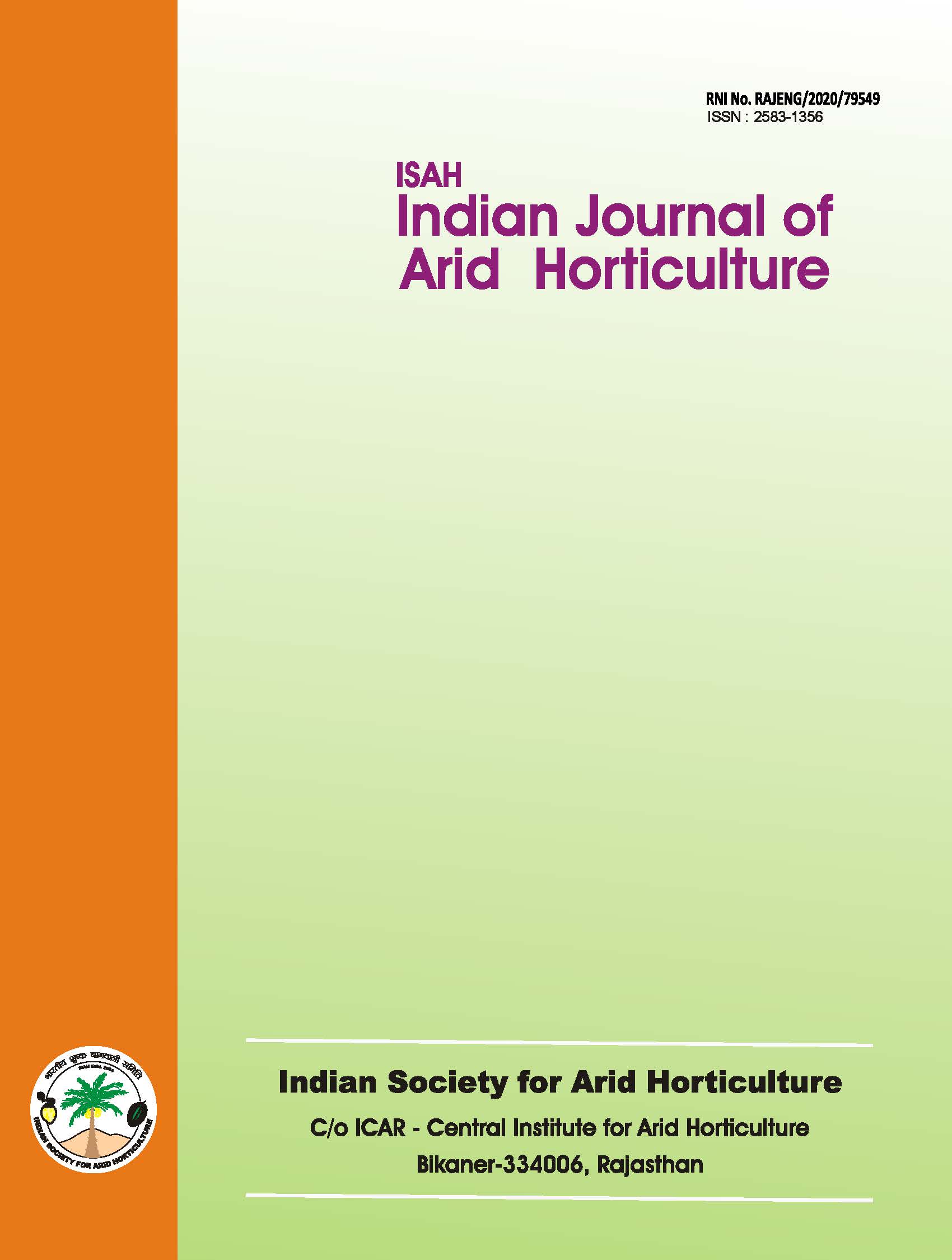PCR compatible, genomic DNA extraction procedure for lasora (Cordia myxa (Roxb.)
Keywords:
semi-arid, non-cultivable, commercial, lasoraAbstract
Cordia myxa (Roxb.) is commonly known as "lasora". It is an under-exploited fruit and herbal tree in rural India. It belongs to the family Boraginaceae and probably originated in the Indian sub-continent (Samadia, 2005). It is widely distributed in the arid and semi-arid regions of India and yields fruit during April-May. Immature fruits of lasora are used for making pickles and vegetable curries, and matured fruits are very nutritious, rich in carbohydrates and total ash. This fruit tree is not a commercial crop but it grows naturally in the non-cultivable or waste lands, backyards, on roadsides and farm boundaries (Samadia, 2005). Conservation and understanding genetic diversity of this under-exploited crop is the primary requirement for identification of superior genotypes for its improvement and exploitation. Considerable diversity on the basis of morphological parameters has been reported in the naturally growing population of lasora in Rajasthan (Samadia, 2007).Downloads
References
Dellaporta, S.L., Wood, J. and Hicks, J.B. 1983.Aplant DNA mini preparation: version II. Plant Molecular Biology
Reporter. 4:19-21.
Fang G, Hammar S and Grumet R.1992. A quick and inexpensive method for removing polysaccharides from plant genomic DNA. Biofeedback 13: 52-53. Lodhi, M.A., Guang-Ning, Y., Norman, F.W. and Bruce, I.R. 1994. A simple and efficient method for DNA extraction from grapevine cultivars. Vitis species and Ampeliopsis, Plant Molecular Biology Reporter. 12: 6-13.
Samadia, D.K. 2005. Genetic Variability Studies in Lasora (Cordia myxa Roxb.). Indian Journal of Plant Genetic Resources. 18: 236-240.
Samadia, D.K. 2007. Variability and Scope of Improvement
in Lasora (Cordia myxa). Indian Journal of Agroforestry. 9: 111-115."
113

